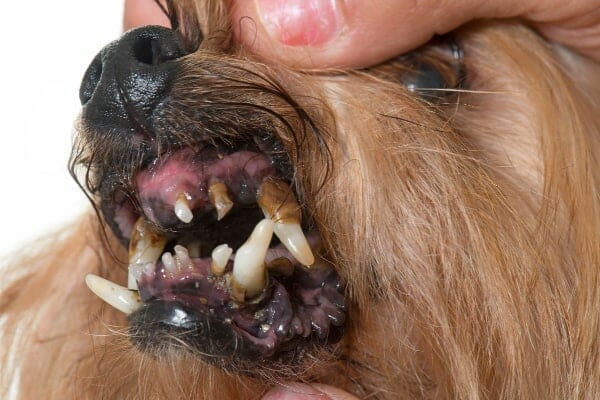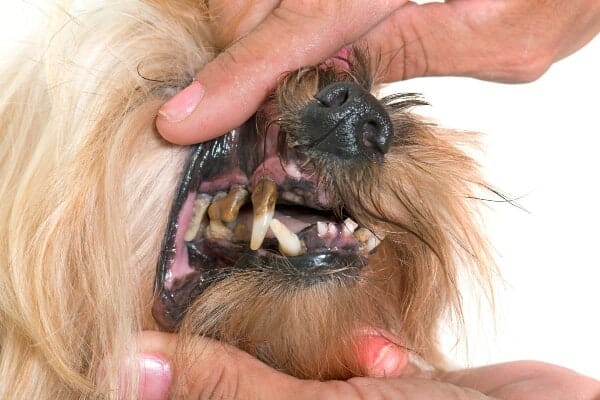When will my puppy lose their teeth?
When puppy teeth fall out often depends on the breed. In smaller breeds they tend to lose their teeth quicker because they mature faster than larger breeds.
Because these needle sharp dog teeth are so tiny, you may not even notice they’re falling out. Many puppies swallow them while eating or they fall out while playing. Swallowing the teeth isn’t harmful to your puppy and a little bleeding isn’t anything to worry about, either.
If your dog is between 3 ½ – 7 months old, it is possible that you found a deciduous tooth that was shed during the eruption of the adult dentition. However, puppies sometimes break baby teeth and can develop infections that can damage the developing adult tooth if a portion of the baby root and possibly crown is still present. If you think this may have happened or the teeth do not appear normal, bring your puppy in for a thorough dental exam.
The majority of the time when an adult pet loses a tooth it is due to significant periodontal disease. Often there are other teeth that are loose or diseased which can cause your pet discomfort. Periodontal disease is very common in pets and can significantly affect their quality of life. Your veterinarian can assess your pet’s mouth as well as their general health. Dental cleaning and assessment under general anesthesia are likely warranted. Before proceeding, you can discuss the options as well as any recommended preoperative tests and medications. Anesthesia is very safe, however for pets with dangerous health conditions such as congestive heart failure, your veterinarian may decide that medical management is an alternative approach.
It is best to retain the lost tooth and bring it along to the veterinary visit as it is helpful to know if a portion of the root could be retained. If an essential tooth like a canine is traumatically avulsed, the tooth can be placed in milk as this can keep it viable in case the tooth can be replaced into the socket.
If a tooth breaks, generally the root and often a portion of the crown are left in the mouth. If the pulp chamber is exposed so are the nerves in the tooth, causing pain or sensitivity. Bacteria can also travel along the pulp chamber and lead to a tooth root infection. Broken teeth with exposed pulp should either be extracted or endodontically treated (root canal, or vital pulpotomy if very recent). A consultation as soon as possible is recommended.
Our pets rarely show signs that their mouth is bothering them. A lost tooth should prompt you to have a good look in your pet’s mouth and to seek veterinary care. Your pet will thank you.
Signs of advanced stages of periodontal disease
If your dog is in the more advanced stages of periodontal disease, you may see the following:


¿When do PUPPIES LOSE BABY TEETH?
If you have a new puppy, depending on their age, they may have wagged into your life with varying numbers of baby teeth. Much like human babies, puppies are usually born toothless, and then grow a set of 28 puppy teeth. But when do those puppy teeth fall out?